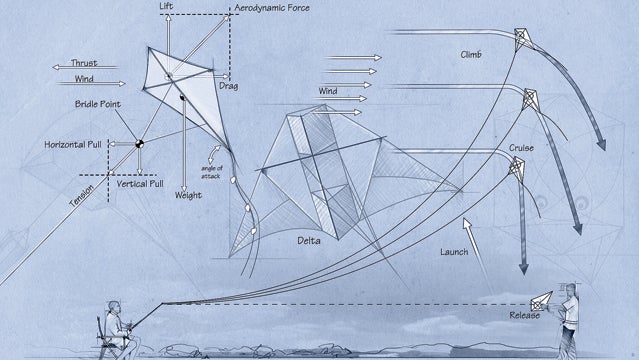1. CHOOSE YOUR WEAPON: Different shapes fly best in different wind speeds. Diamonds are ideal in moderate winds, while big box kites are good when it鈥檚 blowing strong and steady. For beach kiting, go with a triangular kite like the Delta from ($47), which has a polycarbonate frame and a 102-inch wingspan and handles well in all kinds of conditions.
2. LIFTOFF: Most kites require a partner and a breeze of at least five miles per hour to maintain loft. Here鈥檚 a surefire method for a successful launch on your first go. (1) Spool out 40 feet of line as your kite holder walks downwind of you. (2) Watch for signs of an approaching gust鈥攕wirling sand, rustling leaves鈥攖hen run directly into the wind as your partner releases the kite. (3) Don鈥檛 pay out more line until your kite is steadily gaining altitude.
3. GET HIGH: Most rigs come with around 120 feet of string, which isn鈥檛 nearly enough for serious kiting. You want 1,000 feet of a line that won鈥檛 get tangled and is lighter than nylon. (The higher you go, the more line weight is a factor.) Opt for two spools of ($15). Dole out the line conservatively; if there鈥檚 not enough tension, the kite will dive.
4. FLY RIGHT: Old-school bobbins work fine, but you鈥檒l have a much easier time if you upgrade to a deep-sea fishing rig like Penn鈥檚 ($130 for both). Preload the reel with one of the 500-foot spools, get your kite in the air with the other, then tie the two together with a square knot. For hands-free kiting, zip-tie a 12-inch-long PVC pipe to a lawn chair and insert the butt end of the rod. Crack a beer. Enjoy.


